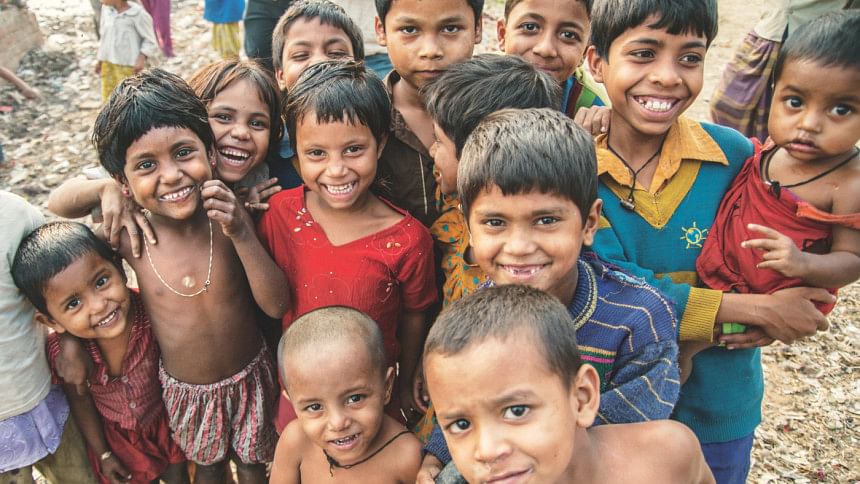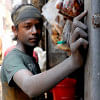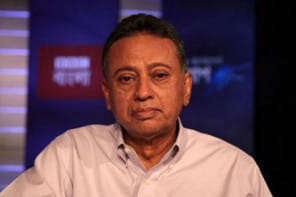No going back to school for slum children

Despite being of school-going age, 12-year-old Sayem and his siblings -- Siam, 8, and Sadia, 6 -- are out of school at present.
The children live in Sat Tola slum in the capital's Mohakhali area, home to around 5,000 families.
Sayem had dropped out after completing second grade in an NGO-run school, which shut down after the pandemic. The situation is same for many other children as most NGO-run schools in their neighbourhood had closed down due to the pandemic.
Bureau of Non-Formal Education (BNFE) has been operating seven learning centres in the area under their Out of School Children Education Programme since December 2021. However, Sayem and his siblings could not be enrolled in these centres due to various complications.
Under this programme, students were enrolled in the first grade in batches of 30 in 2021. The enrolled students were promised completion of primary education over a span of 42 months with a shortened syllabus.
NGO projects drive slum education, but the operations end with the project timeline. A coordinated database of needs with NGOs could help address this gap.
"The current batch is in third grade now. If the project is extended, then my children will be able to enroll with a new batch once the present lot completes fifth grade," said Selim Sheikh, a day labourer and father of the three.
However, Selim intended to enroll his children at a nearby government primary school rather than waiting for this project to end... but could not do so due to financial strains.
"The educational expenses for all three children posed a financial concern for us," he said.
Although the exact number of primary education dropouts due to the pandemic is yet to be ascertained, Annual Primary School Census report prepared by the Directorate of Primary School said the number of school-going children fell from 2,15,51,691 in 2020 to 2,00,90,057 in 2021 -- meaning 1,461,634 students dropped out of elementary schools in 2021.
Fortunately, 10-year-old Ibrahim Khalilullah, was able to get admission in second grade to a government-run school in Mohakhali Wireless area this year, although he was supposed to be in the fifth grade by this time.
Ibrahim used to go to Ananda School, an NGO-run school that closed down in 2020.
Ananda provided school supplies and a stipend of Tk 1,800 every six months, which helped both guardians and children, said Aleya Begum, Ibrahim's mother.
Managing students in these centres is challenging as almost half of the children dropped out during the pandemic. These students are now uninterested in returning to classrooms since they are already earning.
"Now, we spend a minimum of Tk 2,000 per month on Ibrahim's transportation, tuition, and other expenses. Sending our children to such schools is getting difficult for many. If more schools like Ananda existed, many slum children could receive an education," she added.
Additionally, only eight of 18 BNFE learning centres in the capital's Bhashantek slum are currently operational, said locals.
Bayzid, who only completed second grade, has been directly affected by the closure of the centres. He has been working with a vegetable vendor for the past two months, earning Tk 4,000 per month, which he contributes to his family's house rent.
A rickshaw-puller by profession, Bayzid's father's income is insufficient to support their family of six, while his mother has to stay invested at home among daily chores and taking care of her infants.
"Bayzid has been supporting us with the rent for the last couple of months, which is a great help. It seems unlikely for him to continue studies," said Roksana, his mother.
Bayzid's eight-year-old sister is also currently out of school.
School closures have led to an increase in child labour, with many children becoming conductors of human-hauliers, shop assistants, and more, said Shilpi Ashraf of Bhashantek slum.
While visiting the Karail slum recently, 12-year-old Rasel was found sitting with his baby siblings while his mother, a domestic help, was out to work.
His school, Ashar Alo, closed during the pandemic and never reopened, causing Rasel to drop out after completing second grade.
Since Rasel's addict father does not contribute to the family, his mother has to earn their daily bread while he looks after his younger siblings, said Rasel's grandfather.
"Rasel stood first in second grade and was admitted to third grade, but he had to drop out. It's unlikely that he will be able to return to school," said Rasel's grandfather.
Though Karail is home to around 50,000 residents, only 31 centres have been functional in this area after the pandemic, said Shirin Sultana, a teacher with 17 years of experience in NGO-run schools and now working at BNFE learning centre in the slum.
"Managing students in these centres is challenging as almost half of the children dropped out during the pandemic. These students are now uninterested in returning to classrooms since they are already earning," she said.
Shirin teaches 60 students alone, in two shifts from 10:00am to 5:00pm, for a monthly salary of Tk 10,000. She spends time teaching and convincing parents and children to return to school.
Shirin also mentioned that several NGO-run schools that reopened after the pandemic were forced to shut down due to funding issues.
Mirpur Chalantika slum's 2,000 families face a similar crisis as there aren't enough schools for their children. Many schools in their area also closed during the pandemic and did not reopen.
Brac, which operates 950 learning centres in Dhaka in collaboration with BNFE and 29 partner NGOs, also acknowledged that the number of schools in Dhaka's slums reduced after the pandemic, due to factors like internal migration, funding shortages for small NGOs, and evictions.
According to Brac, delay in receiving bills from BNFE often leads to uncertainty about its partner NGOs' teachers' salaries and school rents, demotivating teachers and disrupting school activities. This ultimately affects the children.
According to Unicef, which also operates 317 such learning centres in Dhaka slums through Jagarani Chakra Foundation and Surovi, the demand for such centres is much higher.
Iqbal Hossain, education manager of Unicef's education and skill for adolescents and out-of-school children programme, said it is unfortunate that government does not assess the need for schools in slums, considering them as temporary settlements, despite the reality that slums are not disappearing.
"NGO projects drive slum education, but the operations end with the project timeline. A coordinated database of needs with NGOs could help address this gap," he said.
Dr Md Abul Kalam Azad, director general of BNFE, however, said the number of schools before and after the pandemic remained the same, based on the information provided by his officials.
Dr Azad said each school has an enrolment of 30 students, despite claims from teachers and local residents about student dropouts and their involvement in child labour.


 For all latest news, follow The Daily Star's Google News channel.
For all latest news, follow The Daily Star's Google News channel. 




Comments